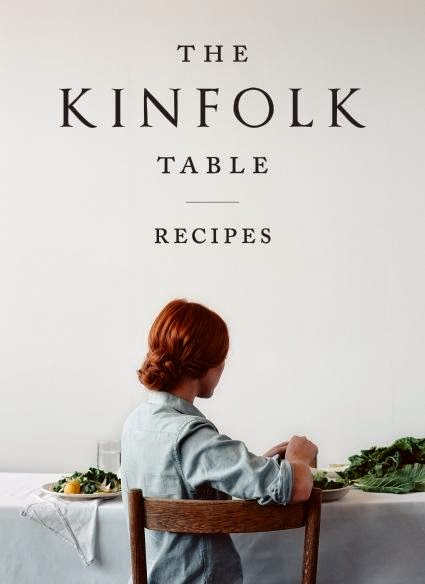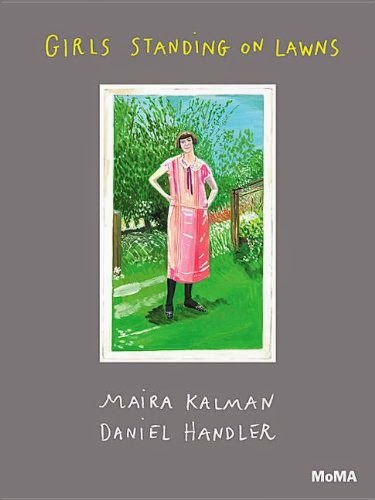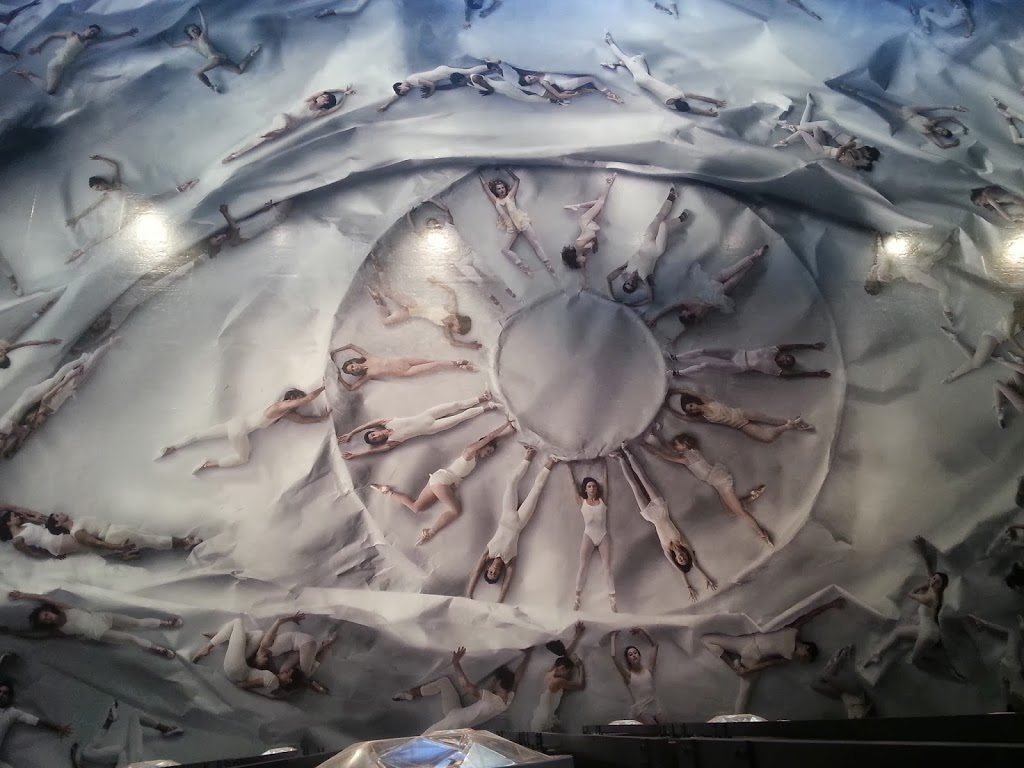I’ve been following Kinfolk, the website and quarterly print magazine, for a while now. I love the Kinfolk vibe and content and especially the always fantastic photography contained therein. The Kinfolk Table, published last fall, is part cookbook, part lifestyle manifesto, in the absolute best way. And it is lovely to look at. I really think author and Kinfolk founding editor Nathan Williams summed it all up when he wrote, “I can’t help being excited to introduce you to all the people in this book because they seem to understand that good food and community are just as important as the careers in which they work, that the rituals and traditions that bring us together are essential to balanced lives.” So very true.
The Kinfolk Table: Recipes for Small Gatherings by Nathan Williams (Artisan, 2013)
www.kinfolk.com
I adore the work of Maira Kalman, ADORE. It speaks to me like no other, always smart, deeply human, full of cultural and historical references, humorous beyond compare and sometimes even heartbreaking. Her newest book published just this month, Girls Standing on Lawns, is a fantastic collaboration with the writer Daniel Handler (Lemony Snicket) and the Museum of Modern Art. A selection of over forty early to mid 20th-century photographs (by unknown photographers) of girls quite literally standing on lawns from the MoMA collection mingle with Kalman’s marvelous illustrations of said photographs and Handler’s poetic verse. You must read it.
Girls Standing on Lawns by Maira Kalman and Daniel Handler (MoMA, 2014)
www.mairakalman.com www.moma.org
We’re so excited to share this short film by our great friend Yuko Edwards.
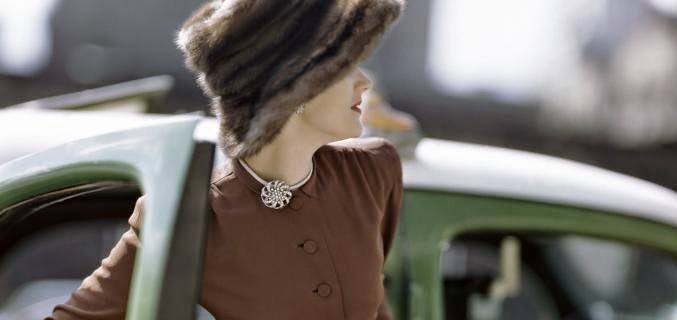 |
| Constantin Joffé, American Vogue, September 1945. © 1945 Condé Nast |
Fashion and photography seemed to be everywhere in Paris last month! Another exhibition I loved is Papier glacé: un siècle de photographie de mode chez Condé Nast (Coming into Fashion: a Century of Photography at Condé Nast) at the Palais Galliera Museum of Fashion. Containing 150 original prints from some of the most celebrated fashion photographers of the early 20th century to the present day, the show is not organized chronologically or by artist, but instead by theme, I think a far more interesting way to look at the work. The perfectly curated images are breathtaking in person. We’re talking about Norman Parkinson and Herb Ritts and Man Ray and Deborah Turbeville and George Hoyningen-Huene and Bruce Weber and Inez van Lamsweerde and Vinoodh Matadin and Irving Penn… Also included are contemporary fashion films, screens for exploring various Condé Nast publications and select haute couture. And if you’ve not been to the Palais Galliera, there is a lovely, open garden with a sort of dreamy view of the Eiffel Tower.
Papier glacé: un siècle de photographie de mode chez Condé Nast runs through May 25.
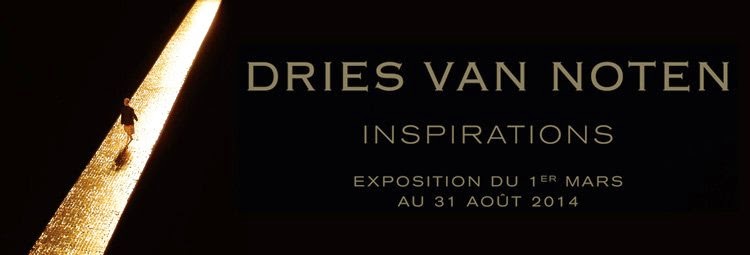
One of the most fascinating exhibitions in Paris right now can be found at the Musée des Arts Décoratifs, Dries Van Noten: Inspirations. It’s not quite a career retrospective, nor even a fashion exhibition, but rather, a show about the creative process of the brilliant Belgian designer himself. Contained within some 15,000 square feet, it feels remarkably intimate in its vast, two level space. The content itself, more than 400 pieces, feels intimate too — a first-time invitation into the world of Dries Van Noten and his tremendous array of inspiration which includes film, photography, fine art, music, nature and fashion, from multiple centuries and multiple countries. Cecil Beaton, Bronzino, Elizabeth Peyton, Jacques-Émile Blanche, Paul Poiret, Francis Bacon, Balenciaga. Van Noten’s far-ranging stylistic references are another important element in the installation such as feathers, butterflies, Orientalism, India and the uniform. And I loved David Michalek’s Slow Dancing film, with his wife Wendy Whelan as one of the featured performers, a special commission for this exhibition.
Dries Van Noten: Inspirations runs through August 31, 2014
www.lesartsdecoratifs.fr/
Despite a fair amount of time spent in Paris over the last several years, I visited the Montparnasse Cemetary for the very first time last month. I can’t believe it has taken me this long! The art and architecture contained within this dense, peaceful 47-acre space (created from three separate farms in 1824) is very inspiring.

I must have spent at least two hours there, some of it just wandering aimlessly and some of it purposely seeking out my artistic and intellectual heroes of the last century. This venerable list included Constantin Brâncuși, Henri Laurens, Tristan Tzara, Brassaï, Simone de Beauvoir, Jean-Paul Sartre, Charles Baudelaire, and Jacques Demy, along with many others. I was particularly pleased to discover, by chance, the captivating marker of the celebrated French aviator, Maryse Bastié. And I was particularly grateful to the lovely gentleman, carefully tending to the grave of a family member, who offered to help me search for the rather hard to find grave of Man Ray and Juliet May Ray, simply in exchange for a tissue. There is indeed a wealth of kindness in this world.
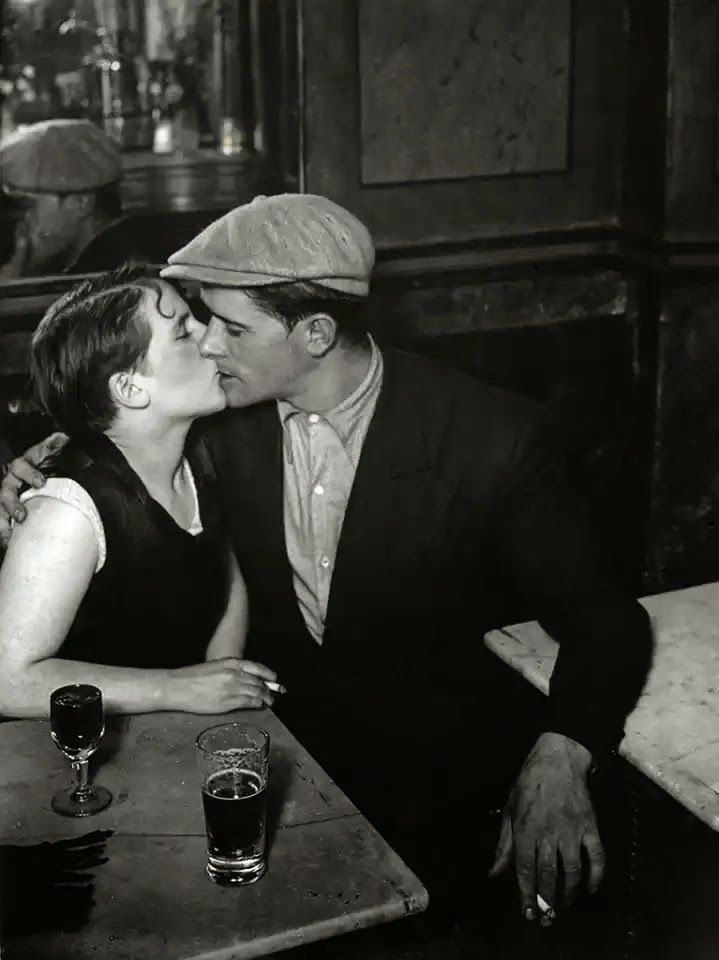 |
Brassaï, Couple d’amoureux dans un bistrot, rue Saint-Denis, c. 1932
© Estate Brassaï
|
Ah, Paris. My trip a few weeks ago really could not have been better, in fact, it was rather perfect. The weather was glorious, everything was in bloom, the city didn’t feel overly crowded — Paris was certainly at its best. There were so many fantastic exhibitions on last month with a particular focus on fashion and photography. One such is a major Henri Cartier-Bresson show at the Pompidou Centre running through June 9. Friends in Paris warned me that the lines for admission were still quite long (it opened just a few weeks before my arrival) so I decided to conserve my time and skip it altogether. Although, I understand it is most definitely worth seeing.
I did get to a tremendous exhibition at the Hotel de Ville, Brassaï: Pour l’Amour de Paris. The Hungarian-born Brassaï (1899-1984) was unquestionably one of the most important photographers to document Paris in the twentieth century. Not necessarily the obvious, but rather the less obvious, and perhaps the far more compelling and truthful — the city at night, nightlife, light and shadows and even the somewhat deviant — from his perspective within the artisic and intellectual avant-garde. This installation was significant, comprehensive and smart. I loved it. Brassaï: Pour l’Amour de Paris was set to close on March 29, however a beautiful catalog was produced, available here. And I had never actually been inside the Hotel de Ville, very nice!
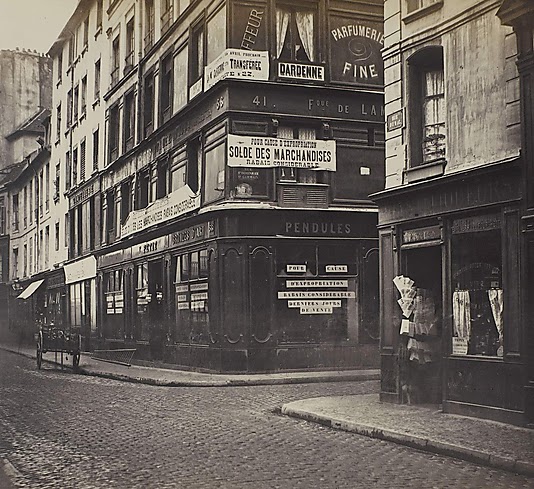 |
| Charles Marville (1813-1879), Corner of rue de Bac and rue Saint-Dominique, Paris, ca. 1874. Photograph Musée Carnavalet, Paris. |
I’m back from my beautiful trip to Paris, where I found spring(!) and about which I’ll be writing for the near future, no doubt. Before I left, I went to see a very interesting exhibition at the Metropolitan Museum, Charles Marville: Photographer of Paris. Commissioned by the city to photograph both pre- and post-Haussmann renovated Paris, Marville’s images are a tremendous documentation of this once medieval city transformed into one of the most grand in Europe. This installation of roughly one hundred images is fantastic and well worth a visit. While you’re there, make sure to take a look at Paris as Muse: Photography, 1840s-1930s in the adjacent Howard Gilman Gallery in the museum.
Charles Marville: Photographer of Paris and Paris as Muse: Photography, 1840s-1930s both run through May 4.

I am going to cut right to the chase and tell you that I LOVED the exhibition, Capa in Color, at the International Center of Photography. Robert Capa (1913-1954) is certainly best known for his incomparable black-and-white war photography (he documented five wars during his short lifetime and was killed in the midst of First Indochina War) and for co-founding Magnum Photos (the first, and still foremost, international cooperative agency for freelance photographers.) But Capa had another body of work that included absolutely exquisite color images that appeared in magazines such as Life, The Saturday Evening Post, Collier’s and one of my personal favorites, the travel magazine Holiday, a fantastic publication known for working with the world’s finest photographers and writers. These images are perfectly evocative of their era and, especially for a postwar American audience, captured a world quite far and away. Capa in Color presents this body of work for the very first time and contains more than 100 photographs culled completely from ICP’s own collection. After all, Capa’s younger brother, the renowned photographer Cornell Capa, founded ICP to preserve and impart Robert Capa’s tremendous legacy. With this great show, they clearly continue to do so.
Capa in Color runs through May 4.
www.icp.org
As part of the NYCB Art Series, a breathtaking installation by celebrated French street artist and photographer, JR, is currently on view at the David H. Koch Theater. In addition to the 6,500 square foot image of the company forming an eye amidst white paper sets that is affixed to the floor of the promenade level within the theater, there are also several wood panels with transferred images of the dancers and a massive, ethereal image pasted to the building’s facade. The entire exhibition is incredibly inspired and simply gorgeous to experience in person. The installation was open to the public all last week and will be in place during the winter season, if you are lucky enough to have tickets, which runs through March 2.
Check out this video about the artist and the creation of his NYCB series.

